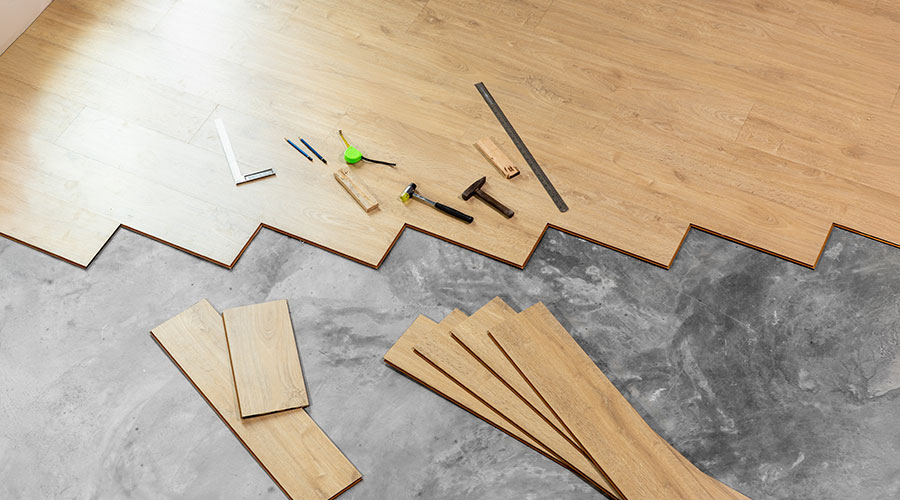Substrate Problems Can Ruin Commercial Flooring
If resilient flooring such as sheet vinyl, sheet rubber or linoleum is to be used, the substrate must also be as level as possible. The more gloss the surface has, the greater the chance an inconsistency in the substrate will telegraph through to the surface. Also, if a high gloss finish is to be applied, the adhesive used to install the new flooring should be rolled on, not troweled on, to avoid the trowel marks telegraphing through.
Today there are a multitude of new installation technologies meant to eliminate the use of adhesives from a bucket. It is essential to confirm whether they'll work under the circumstances of use. Under some circumstances — for example, if concentrations of fly ash in new concrete exceed 35 percent, if curing compounds are used or if chemistry with no history and no back up is applied — very few installation systems may work. In some cases the only solution is to mitigate the substrate.
Wood substrates of OSB (particle board) or plywood can also compromise an installation. Wood substrates may absorb moisture and cause the adhesive to fail. Conversely, moisture from the adhesive may also activate chemistry in the wood that will destroy the adhesive. Sometimes a simple application of latex milk on the wood substrate will be enough to prevent failure as it will seal the wood and be compatible with adhesives.
Specify Flooring Experience
Facility managers should only be using commercial flooring contractors and installers with a minimum of five years of experience — 10 years for custom flooring material. Qualifications for the installation contractor and installer should be written into the specification or bidding process and contract for work. Installation qualifications can be specific to the flooring materials. Installers should employ high quality materials and appropriate tools that follow standard industry practices and comply with manufacturers' guidelines. It's appropriate to ask for an installation warranty on workmanship — typically one year, although an extension can be negotiated.
The facility manager should ensure that the space where the floor covering will be installed is free of encumbering conditions. Flooring should be the last thing installed and shouldn't be the platform for other trades to work on.
Finally, the proper protective coverings must be used to prevent damage to the flooring material during move-in. The use of the protective material should not jeopardize the flooring material or the installation, but some do.
Many flooring installation issues can make the facility manager's life less than pleasant. But there's good news: Virtually all failures can be prevented if the facility manager is proactive. The key is knowing where problems may arise and how best to prevent them.
Lewis Migliore is president of LGM and Associates, which offers technical flooring services.
Related Topics:












